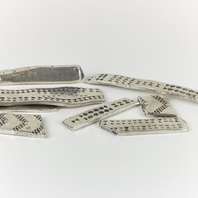
Viking Objects
Reproduction Hacksilver
These white metal reproductions of Viking Age hacksilver are typical of hacksilver finds. The Scandinavians had a bullion economy in the Viking Age and paid for goods by weight of silver rather than by using coins with a set monetary value. Arm rings are one example of wearable wealth that could be cut up to pay for goods when needed.
Read More
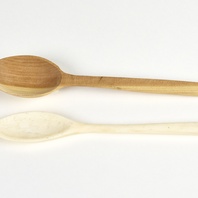
Viking Objects
Reproduction Wooden and Bone Spoons
Most ordinary people in the Viking Age would have used spoons made of bone or wood. These are typical examples of the types of spoons that people would have had. Wealthier people would have had copper alloy or silver spoons.
Read More
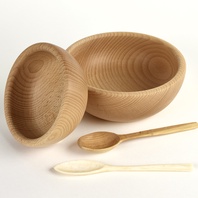
Viking Objects
Reproduction Wooden Bowls
Many everyday utensils would have been made from bone or wood. These photographs feature examples of wooden bowls.
Read More
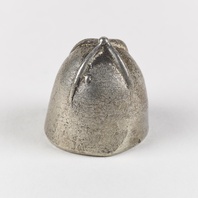
Viking Objects
Reproduction Lead Gaming Pieces
Reproduction lead gaming pieces of a type commonly found across the East Midlands, including at the Torksey Viking camp. The reproductions are tin alloy while the originals were made of lead. These gaming pieces would have been used to play hnefatafl or Nine Men’s Morris, both of which are games known to have been played by Scandinavians throughout the Viking diaspora. It has also been suggested that these might have been weights.
Read More
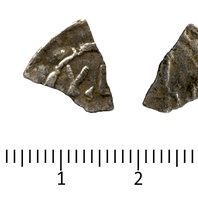
Viking Objects
Arabic Silver Dirham Fragment (SWYOR-1AE8AA)
This silver dirham fragment does not provide enough information to determine the ruler or moneyer but it seems to be from the seventh to ninth century. The dirham was a unit of weight used across North Africa, the Middle East, and Persia, with varying values which also referred to the type of coins used in the Middle East during the Viking Age. These coins were extremely prized possessions not only for their silver value but as a way of displaying one’s wealth and vast trade connections. Millions of Arabic dirhams would have been imported throughout the Viking world and are mostly found in hoards.
Read More
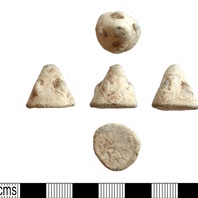
Viking Objects
Lead Gaming Piece (PUBLIC-67DBE3)
This and similar pieces have also been interpreted as weights although the gaming-piece interpretation is more secure. Pieces like this would have been used to play hnefatafl and/or Nine Men’s Morris, both of which are known to have been played in Scandinavia in the Viking Age.
Read More
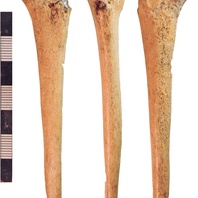
Viking Objects
Pin-Beater (NLM-78D3B5)
This pin-beater was made from a large mammal limb bone, trimmed to a rounded point and smoothed and glossed by wear and handling. Single-ended simple weaving tools are a class linked to the Anglo-Scandinavian use of the vertical loom.
Read More
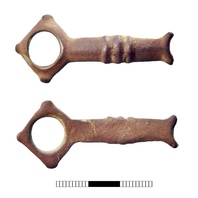
Viking Objects
Harness Fitting (SUR-38C283)
A simple double ended strap-link used as part of a harness. The metal has a reddish tint often associated with Anglo-Scandinavian material.
Read More
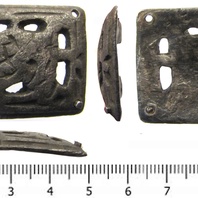
Viking Objects
Anglo-Scandinavian Silver Mount (SWYOR-0201A1)
This silver rectangular mount is decorated with an openwork design consisting of a possible backward-facing animal alongside interlace which may have zoomorphic elements.
Read More
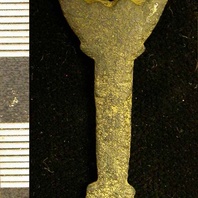
Viking Objects
Copper-Alloy Key (LEIC-931912)
Slide keys such as this example are generally known as ‘Viking keys’ due to similarities in shape with excavated examples. However, its T-shaped projections at the base have no identified parallels but the design could possibly show Anglo-Scandinavian influence. Keys were not only practical items but also symbols of status. Women often carried the keys to the family’s chests of valuables. They also are often buried with keys, representing their authority in the household. See also the blog post on keys in the Viking Age.
